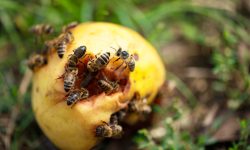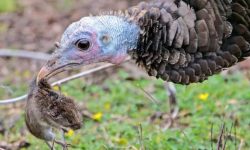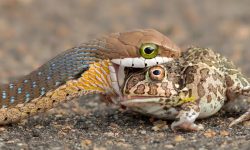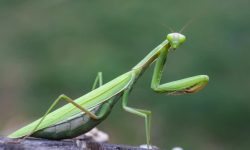Ants are some of the most fascinating and successful creatures on Earth. Found almost everywhere, from deserts to rainforests, these tiny insects have built complex societies that rely on teamwork, communication, and — most importantly — food. But have you ever wondered what ants actually eat?
Despite their size, ants have a surprisingly varied diet. As omnivores, they consume both plant and animal matter, feeding on whatever is available in their environment. From sugary fruits to dead insects, each ant colony adapts its diet based on its habitat and species.
In this article, we’ll explore 20 foods ants love the most, uncovering how they forage, share, and thrive on such a wide range of meals. You’ll see that even the smallest crumbs in your kitchen can be a feast for an entire colony.
Understanding the Ant Diet

Ants Are Omnivorous Survivors
Most ants are omnivores, meaning they eat both plants and animals. Their ability to digest a wide variety of food sources has made them one of the most successful species on the planet. Ants will eat anything from sweet nectar and fruits to dead insects and seeds.
Their diet depends largely on the species and role within the colony. Worker ants, for example, gather food and bring it back to feed the queen, larvae, and soldiers. This sharing system ensures that every member of the colony gets the nutrients it needs to survive.
How Ants Collect and Process Food
Ants use chemical trails called pheromones to communicate and locate food. Once a worker ant finds a food source, it leaves a scent trail for others to follow, leading to the efficient foraging lines we often see.
They can carry items up to 50 times their body weight, transporting crumbs, seeds, or dead insects back to the nest. Inside the colony, they chew and process food into liquid form to share through a process known as trophallaxis — mouth-to-mouth feeding among ants.
What Ants Need to Thrive
Ants require three essential nutrients to stay healthy: proteins, carbohydrates, and fats.
-
Carbohydrates (like sugar and nectar) provide quick energy for workers.
-
Proteins (from insects or meat) help larvae grow strong.
-
Fats and oils support egg-laying and overall colony health.
Depending on the season and life stage of the colony, ants adjust their food preferences to maintain balance and growth.
20 Foods Ant Colonies Love the Most
1. Sugar and Honey
Sugar is one of the most irresistible foods for ants. They are naturally drawn to sweet substances because sugar provides instant energy for their active lifestyles.
Worker ants often find sources of sugar like spilled drinks, fruit juice, or honey and quickly bring it back to the nest. Honey is especially popular because it contains glucose and fructose — two simple sugars that ants digest easily.
In the wild, ants collect nectar from flowers or tree sap as a natural sugar source, sustaining their constant foraging activity.
2. Fruits
Fruits such as apples, bananas, and grapes attract ants with their high sugar and water content. Ripe or decaying fruit releases strong scents that ants can detect from far away.
When ants discover fruit, they consume the juices or carry small bits back to their nest. Fruits provide not only carbohydrates but also vitamins and hydration.
Ants play a small ecological role here — by feeding on fruit, they help disperse seeds and speed up natural decomposition.
3. Nectar
Nectar is one of the most common foods for many ant species. Found in flowers and secreted by plants, it’s a sweet, energy-rich liquid that ants collect daily.
Certain ants form mutualistic relationships with plants — in exchange for nectar, ants protect the plants from herbivores. Some tropical plants even have special glands called nectaries just for ants.
Nectar serves as a clean, constant sugar source that fuels the colony’s everyday activity and travel.
4. Seeds
Seeds are a vital food for many ground-dwelling ants, especially harvester ants. These ants specialize in collecting and storing seeds for future use.
They break down the outer shells with strong mandibles before feeding the starchy inside to the colony. Seeds are packed with carbohydrates and fats, providing long-term energy storage.
This food source also allows ants to survive during dry seasons when other foods are scarce.
5. Dead Insects
Ants are natural scavengers and often feed on dead insects they find during foraging. This is a major source of protein and nutrients for the colony.
They dismember the carcasses, carrying small pieces back to the nest where larvae consume most of the protein.
By eating dead insects, ants help clean up the environment, acting as nature’s recyclers and reducing decay in their habitats.
6. Meat
Some ants, especially fire ants and army ants, hunt small animals or scavenge meat from carcasses.
These predatory ants attack prey using powerful jaws and venom, bringing chunks of meat back to feed the larvae. Meat provides dense protein and fat, ideal for growing colonies.
In urban areas, ants are often found near pet food or leftovers — anything with meat attracts them almost instantly.
7. Honeydew (from Aphids)
Honeydew is a sugary liquid secreted by aphids and other plant-sucking insects. Ants “farm” these insects, protecting them from predators in exchange for honeydew.
This unique relationship benefits both species — ants get a constant food supply, and aphids gain protection.
Honeydew is rich in sugar and water, making it an essential energy source for ants living near plants and gardens.
8. Tree Sap
Tree sap serves as a natural carbohydrate source for many forest-dwelling ant species. It’s similar to nectar but available year-round.
Ants collect sap from tree wounds, leaf stems, or insect-infested bark. This sticky, sweet fluid provides sustained energy throughout the day.
Some ants even dig small holes in bark to encourage sap flow, demonstrating their resourcefulness.
9. Bread Crumbs
Bread crumbs are one of the most common human foods ants collect in homes and outdoors. The starch and sugar in bread make it an easy energy source.
Ants usually cut small pieces and carry them back to the nest. Crumbs can sustain a colony for days, especially in urban areas where natural food is limited.
In captivity, bread soaked in honey is sometimes given as an energy-rich treat for ant farms.
10. Oils and Fats
Ants are attracted to fatty foods like peanut butter, meat grease, and cooking oils. Fats are vital for their queen’s egg-laying and the development of larvae.
Worker ants bring tiny droplets of oil back to the colony or lick surfaces coated with grease. These lipids serve as long-term fuel.
Some species, like Argentine ants, prefer oils over sugar, showing how diet preferences vary by species.
11. Nuts
Crushed nuts such as almonds, peanuts, or walnuts provide fats, proteins, and carbohydrates.
Ants gnaw on the soft inner parts, taking small bits back to the nest. In the wild, they find fallen nuts under trees or near feeding grounds.
Nuts are particularly valuable for ant colonies during cooler months when insect populations decline.
12. Vegetables
Though ants prefer sweeter foods, they sometimes eat vegetables like corn, peas, or potatoes. These offer natural starch and fiber.
They usually target cooked or decaying vegetables because they’re softer and easier to chew.
In gardens, ants often feed on plant juices or the fungi growing on decomposing vegetable matter.
13. Fungi
Some ant species, such as leafcutter ants, are famous for cultivating fungi. They cut fresh leaves and transport them back to the nest to feed their fungus gardens.
The ants don’t eat the leaves themselves — instead, they consume the fungus that grows on them. This fungus provides complete nutrition for the colony.
Leafcutter ants demonstrate one of the most advanced forms of agriculture in the animal kingdom.
14. Rice and Grains
Rice, oats, and other grains attract ants for their starch and sugar content. They often raid kitchens or storage areas where grains are exposed.
In the wild, ants gather grains from plants or harvest fallen kernels near farms.
Grains provide sustained carbohydrates, keeping the colony’s workers energized during long foraging hours.
15. Small Animals
Some aggressive ant species, like driver ants and army ants, hunt small animals, frogs, and lizards.
These ants attack in massive numbers, overpowering prey with collective force and sharp mandibles.
Although rare, this behavior shows the diversity of ant diets and their adaptability as apex micro-predators in the insect world.
16. Cheese
Cheese attracts ants because it contains fats and proteins. Soft cheeses release strong odors that ants detect easily.
They nibble at small crumbs or moist spots, extracting nutrients and moisture.
In homes, even a small piece of cheese left out can trigger a large ant invasion in hours.
17. Cake and Pastries
Sweet baked goods like cake, cookies, and pastries are irresistible to ants. Their sugar and fat content provide instant energy.
Ants quickly form lines to transport crumbs back to the nest. These foods are particularly attractive to household ants during summer.
Though not a natural food source, sweets mimic the sugars ants find in fruits and nectar, making them equally appealing.
18. Dead Animals
Ants are scavengers and often feed on carcasses of larger animals. This includes dead birds, reptiles, and mammals.
They break down soft tissues and carry small pieces back to their nests, cleaning the environment in the process.
This behavior is crucial to ecosystems, as ants help decompose organic material efficiently.
19. Milk and Other Liquids
Ants drink liquids rich in sugar or protein, such as milk or fruit juice. They absorb these through their mouthparts and store them in a special crop inside their bodies.
They often feed on spills or drips, sharing the collected liquid with other ants through trophallaxis.
These fluids hydrate the colony and serve as quick sources of energy in hot conditions.
20. Human Food Scraps
Ants are opportunistic feeders and thrive near humans due to easy access to leftovers. From pizza crusts to candy, almost any scrap can become a meal.
In cities, ant colonies often build nests near garbage bins or kitchens, relying on constant human food waste.
Their ability to adapt to human environments proves their incredible survival instincts and dietary flexibility.
Frequently Asked Questions (FAQs)
Do all ants eat the same food?
No. Ant diets vary by species. Some prefer sweets, others focus on proteins or fats depending on their habitat and role in the colony.
Do ants eat meat?
Yes. Many ants, especially predatory species like fire ants or army ants, hunt small insects or scavenge meat from carcasses.
What do baby ants eat?
Larvae primarily eat protein-rich food like dead insects or meat provided by worker ants to grow and develop properly.
Why do ants like sugar so much?
Sugar provides quick energy, helping worker ants stay active during long foraging trips. It’s also easily digestible for the whole colony.
Do ants eat dead ants?
Sometimes. When food is scarce, some ant species may recycle nutrients by consuming deceased colony members.
Conclusion
Ants may be tiny, but their eating habits reveal a complex and highly efficient system of survival. From sugary nectar and fruits to dead insects and fungi, ants eat almost anything that provides nutrients. Their diets differ between species but always serve one purpose — to fuel the entire colony.
By foraging, sharing, and recycling, ants play an essential ecological role. They clean up organic waste, disperse seeds, and even farm fungi, proving that these small creatures have a huge impact on the environment.
So next time you spot a trail of ants carrying crumbs or seeds, remember — they’re not just scavenging. They’re feeding an empire.






